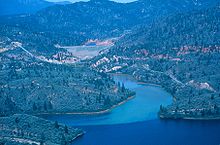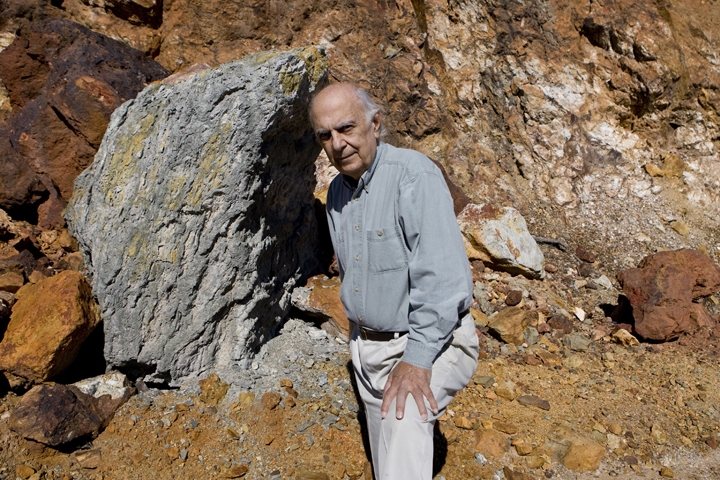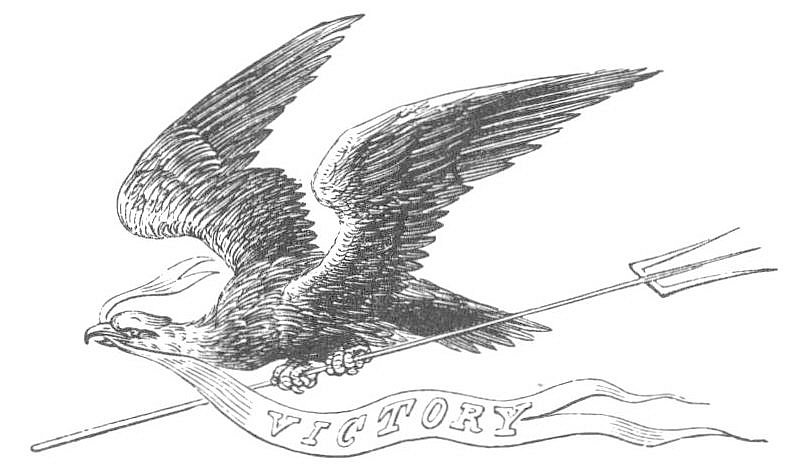


http://www.ironmountainmine.com/
http://www.ironmountainmine.com/TED_ARMAN_DESERVES_A_FAIR_HEARING.htm
http://www.ironmountainmine.com/VETERANS_HOUSING.htm
http://www.ironmountainmine.com/about.htm
http://www.ironmountainmine.com/SENIORS_HOUSING.htm
http://www.ironmountainmine.com/technology.htm
http://www.ironmountainmine.com/CATALYST.htm
http://www.ironmountainmine.com/ARMANpart_3.htm
http://www.ironmountainmine.com/INDEX.htm
http://www.ironmountainmine.com/IRON_MOUNTAIN_MINE_DESERVES_A_FAIR_HEARING.htm
http://www.ironmountainmine.com/absolutesovereign.htm
http://www.ironmountainmine.com/ARMAN_part1.htm
http://www.ironmountainmine.com/ARMAN.htm
http://www.ironmountainmine.com/tech1.htm
http://www.ironmountainmine.com/technology1.htm
http://www.ironmountainmine.com/AMD&CSI7-21-2010.htm
http://www.ironmountainmine.com/jointventure.htm
http://www.ironmountainmine.com/SENIORS&VETERANS_HOUSING.htm
http://www.ironmountainmine.com/vindication.htm
http://www.ironmountainmine.com/TED_ARMAN_&_IRON_MOUNTAIN_MINE_DESERVE_A_FAIR_HEARING.htm
http://www.ironmountainmine.com/litigation.htm
http://www.ironmountainmine.com/about_TIME.htm
http://www.ironmountainmine.com/VICTORY.htm
http://www.ironmountainmine.com/AUGUST_23.htm
http://www.ironmountainmine.com/TED_ARMAN_ABSOLUTE_ORIGINAL_PROPRIETOR_IRON_MOUNTAIN_MINES.htm
http://www.ironmountainmine.com/integrity.htm
http://www.ironmountainmine.com/essential_products_admin.htm
http://www.ironmountainmine.com/ARMAN_part2.htm
http://www.ironmountainmine.com/liberty.htm
http://www.ironmountainmine.com/defiance.htm
http://www.ironmountainmine.com/ORGANIC_LAW.htm
http://www.ironmountainmine.com/relief.htm
http://www.ironmountainmine.com/remission.htm
http://www.ironmountainmine.com/OCTOBER-2-2010.htm
http://www.ironmountainmine.com/intervention.htm
http://www.ironmountainmine.com/supersedeas.htm
http://www.ironmountainmine.com/justice.htm
http://www.ironmountainmine.com/safety.htm
http://www.ironmountainmine.com/ARMAN_part4.htmIRON MOUNTAIN MINES INSTITUTE PLANS FOR THE COMPLETE DEVELOPMENT AND INHABITATATION OF CALIFORNIA MINE LANDS SPRING CREEK ARM OF KESWICK RESERVOIR, DISCHARGE IS FROM WHISKEYTOWN POWERHOUSE) IRON MOUNTAIN MINES SENIORS & VETERANS HOUSING AT GRAN DUCADO DE ARMANSHIRE MANOR Site Map Date of indexing: 12/29/2010
58 pages indexed Iron Mountain During the 1890s when Mountain Copper Company owned Iron Mountain Mine, a company town named Iron Mountain was located on the mountain. It was perched on the mountainside near the mine shafts and included a one-story, 7-room cottage with two large brick fireplaces and a wide porch all around for the manager, three superintendent houses containing four or five bedrooms, a two-story, 16-room staff quarters' building a large mess and entertainment hall complete with dining room and kitchen, canteen, billiard room and music room, a hospital, approximately 25 family cottages, and two 16-room bunkhouses for the single men employees. Also on the property was a tennis court, a football field, and the Iron Mountain Post Office. In 1897, a fire destroyed many of the buildings. In 1922, the mine was abandoned but continued to operate intermittently until as late as 1963 when all mining operations ceased. Matheson Matheson was established as a direct result of Iron Mountain Mine and served as the railroad terminus for the mine. A Southern Pacific Railroad siding operated at Matheson until 1951. Ore was hauled from the mine to this siding. In 1921, the rail line was replaced by the Iron Mountain Tramway (aerial). In 1953, the tramway was extended one additional mile from Matheson to Keswick. It operated intermittently into the 1970s. Remnants of it still exist. The Matheson Post Office was established in 1922 and operated until 1962. Matheson Road exists off of Iron Mountain Road and is near the Chappie-Shasta OHV area. The following excerpts are taken from the Iron Mountain Mine entry out of the book titled The Dictionary of Early Shasta County History by Dottie Smith "...Originally worked as a gold mine, later silver, until the true wealth of the mine was discovered to be copper, iron, and sulphur...Discovered in the early 1860s by Charles Camden and William Magee. James Sallee became a 3rd partner when he discovered a silver vein. In 1884, Camden, Magee, and Sallee leased the mine to a Honolulu company who soon returned the property and equipment back to them. Camden, Magee, and Sallee again operated until 1894 when they sold to Mountain Copper Co. Ltd. who built (the next year) a smelter at Keswick and the Iron Mountain Railway, a 3-ft. gauge mountain mining railroad which connected the mine with the Keswick smelter and Southern Pacific tracks at Keswick. In 1898, 221,895 tons of ore were extracted from the mine. The smelter contained two blast furnaces and 80 open-roasting stalls where ore was heap roasted or burned in the open air to reduce the sulphur content, sometimes burning 350,000 tons at a time. Prior to the arrival of electricity, the smelter furnaces and train engines were fueled with wood supplied by a 75-man woodcutting crew who cut down almost all the trees between Keswick and Copley and with 20,000 cords floated downriver from the Flatwoods area by Buick & Wengler. Hydroelectric power arrived in 1901 via the Volta Powerhouse owned by Keswick Electric Power Company to operate the smelter furnaces. Water was pumped 4500 ft. from the Sacramento River through a 16" pipe near the mouth of Spring Creek with the help of a Corliss-Hamilton engine and a cornish plunger pump. The smelter became a major health and environmental hazard because it released huge volumes of poisonous sulphurous dioxide gasses into the air killing most of the vegetation it came in contact with. The company made little attempts to prevent the spread of the poisonous gasses resulting in Superior Court lawsuits which closed the smelter by court order in 1907. The company built a new smelter at Martinez, and in 1920, a 2½ mile ore-hauling aerial tramway from the Hornet Mine to another railroad siding at Matheson and began shipping ore via the railroad to the Martinez smelter for processing. A company town was perched on the hillside near the mine shafts and included a one-story, 7-room cottage with two large brick fireplaces and wide porch all around for the manager, three superintendent's houses containing 4 or 5 rooms, a 2-story, 16-room staff quarters' building, a large mess and entertainment hall which included a dining room and kitchen, canteen, billiard room, and music room, about 25 family cottages, and two 16-room bunkhouses for men. Also on the property was a tennis court and football field. In 1897 a fire destroyed the silver mill, a sawmill, all the stores, the office, the assay department, hospital, the mess and entertainment hall, plus a number of small buildings. But mining resumed and buildings were reconstructed. In 1922 the mine was abandoned. Reopened periodically until 1927. Gossan was extensively mined for gold from 1931 until 1941. Reforestation attempted after World War II when 2.6 million seedlings were planted but the acidic soil and slope instability rendered the project a failure. Underground mining ceased in 1956 and open-pit mining was undertaken at Brick Flat. All mining operations ceased in 1963. Sold to Stauffer Chemical Co. in 1967 who sold to Iron Mountains Inc. in 1976. Placed on the Environmental Protection Agency (EPA) National Priority List and/or the Top 10 Hazardous Site List in 1983 making it eligible as a Superfund cleanup site. Mine holdings include the Complex, Hornet, Lost Confidence, Mattie, No. 8, Old Mine, Brick Flat, and Richmond Mines (Brick Flat, Hornet and Richmond Mines were pyrite mines). The mine was responsible for the creation of the communities of Iron Mountain, Keswick, Matheson, and Taylor. Total copper output was +342,000,000 lbs. making it largest Shasta County producer. Major modifications and changes currently underway to make the mine environmentally safe. Mine was important to Shasta County's economy for 70 years."
EARLY STAFF COTTAGE AT IRON MOUNTAIN
California’s housing crisis is largely of its own making – the escalating consequence of failed public polices that determine how communities grow. The increasing housing shortage is so severe that it affects all Californians, and threatens to mute the State’s economic potential. But the greatest burden for these failures is on the shoulders of the poorest Californians, those who cannot afford a home of any kind, or who live
in substandard or overcrowded conditions.
More than 2.2 million low-income homeowners and renters in urban California are paying more for housing than they should, and as a result do not have enough left over for other necessities
such as food, clothing or medical care. Among low-income renters, about two-thirds pay more than half of their income for housing and 91 percent pay more than the recommended 30 percent. Among low-income homeowners, more than three-quarters pay more than 30 percent of their income toward housing. - The Little Hoover Commission 52,000 ACRES OF MINE LANDS ADJOINING THE SHASTA-TRINITY FOREST AVAILABLE FOR ENTRY & HOMESTEADST.W. ARMAN'S IRON MOUNTAIN MINES 4400 acres of land in Shasta County
Or take the case of Bedrock Bank . . .
Bedrock Bank Gets Too Big Too Fast
Bedrock Bank’s new president was determined to turn his bank into the region’s biggest
lender. Bedrock’s loan officers got the message and started making as many loans as they could
for condominium developments, shopping centers, office buildings, and high-priced suburban
housing developments. Loan applications were not always checked as closely as they had been
in the past, and some of the loans were approved more quickly than they had been in the old
days. But nobody seemed concerned because the local economy was strong and real estate
values were rising rapidly.
Everything seemed fine; everyone was making money. But then the economy slowed down, and
things took a turn for the worse. The weak economy forced many businesses to close, leaving
lots of vacant office space. Real estate values plummeted, and many developers fell behind on
their loan payments.
In the end, Bedrock Bank was losing so much money on bad real estate loans that government
regulators were forced to step in and close it. The regulators tried to find a buyer for Bedrock,
but no other bank wanted to get stuck with all the loans that had gone bad. Eventually,
another bank agreed to buy Bedrock if the federal government would agree to keep many of
the problem loans.
The mayor of Pebbleton announces that, since the
colored flowers are so rare and valuable, they are
going to be used as money, with petals for change.
Is this a good idea? What qualities does a good
form of money have? Why? Which of these qualities
do flowers have and which do they lack? What
would happen to Pebbleton’s economy if someone
then discovered a new sunlit cavern with thousands
of flowers growing in it? Should someone control
the growth of those flowers? Who?Multi-Walled Carbon Nanotubes and Single-Walled Carbon Nanotubes; Significant New Use Rules A Rule by the Environmental Protection Agency on 09/17/2010 Summary EPA is issuing significant new use rules (SNURs) under section 5(a)(2) of the Toxic Substances Control Act (TSCA) for two chemical substances which were the subject of Premanufacture Notices (PMNs). The two chemical substances are identified generically as multi-walled carbon nanotubes (MWCNT) (PMN P-08-177) and single-walled carbon nanotubes (SWCNT) (PMN P-08-328). This action requires persons who intend to manufacture, import, or process either of these two chemical substances for a use that is designated as a significant new use by this final rule to notify EPA at least 90 days before commencing that activity. EPA believes that this action is necessary because these chemical substances may be hazardous to human health and the environment. The required notification would provide EPA with the opportunity to evaluate the intended use and, if necessary, to prohibit or limit that activity before it occurs. Show citation box Unified Agenda Significant New Use Rule (SNUR); Chemical-Specific SNURs To Extend Provisions of Section 5(e) Orders Timeline 21 actions from June 6th, 1994 to December 2010 CONTACT:
Stacy Kika
Kika.stacy@epa.gov
202-564-0906
202-564-4355
Cathy Milbourn
Milbourn.cathy@epa.gov
202-564-7849
202-564-4355
FOR IMMEDIATE RELEASE
September 20, 2010
EPA Launches Green Power Community Challenge Nationwide
Local governments expand use of green power
WASHINGTON – The U.S. Environmental Protection Agency is kicking off its national “Green Power Community Challenge,” a year-long campaign to encourage cities, towns, villages, and Native American tribes to use renewable energy and fight climate change. Purchases of green power help to prevent greenhouse gas emissions and also help accelerate the development of new renewable energy capacity across the United States .
To participate in the challenge, a local government must join EPA's Green Power Partnership and use green power in amounts that meet the program's purchase requirements. The local government must also conduct a campaign to encourage local businesses and residents to collectively buy or produce green power on-site in amounts that meet EPA requirements.
More than 30 cities and towns in Alaska, California, Colorado, Connecticut, Maryland, Oregon, Pennsylvania, Texas, Utah, Washington, and Wisconsin have become green power communities, and are collectively buying more than 900 million kilowatt-hours (kWh) of green power annually, equivalent to the carbon dioxide emissions (CO2) from the electricity use of nearly 80,000 average American homes.
The campaign is designed to expand upon the successes of the program, aiming to double the total aggregate amount of green power used by EPA Green Power Communities. As part of the national campaign, communities will compete to see which one can use the most green power and which one can achieve the highest green power percentage of total electricity use. There will be a separate award for each category with national recognition and special attention from EPA. The winners will be announced in September 2011.
During the challenge, from Sept. 20, 2010, to Sept. 1, 2011, communities will be ranked for the two award categories on EPA's website on a quarterly schedule; EPA will also provide technical assistance to help participants increase their green power usage.
Green power is generated from renewable resources such as solar, wind, geothermal, biomass, biogas, and low-impact hydropower. Green power resources produce electricity with an environmental profile superior to conventional power technologies, and produce no net increase of greenhouse gas emissions.
More information on EPA's Green Power Community Challenge: http://www.epa.gov/greenpower/gpcchallenge
More information about EPA's Green Power Communities:
http://epa.gov/greenpower/communities/index.htm Judicial notice is taken of the court dockets in the state court proceedings.
Fed. R. Evid. 201(b); Dawson v. Mahoney, 451 F.3d 550, 551 (9th
Cir. 2006). Judicial notice is also taken of the second round habeas corpus
petition, including attachments, that was filed in the California Supreme
Court. Id. This document was not considered by the district court. The
attachments include the Superior Court’s order denying Porter’s second
round habeas petition and the Court of Appeal’s decision on direct appeal.
Judicial notice is also taken of California disciplinary proceedings. Fed. R.
Evid. 201(b); White v. Martel, 601 F.3d 882, 885 (9th Cir. 2010).
CALUMET PIGMENT CO. OFFERS 72% GYPSUM 22% IRON OXIDES NATURAL IRON MOUNTAIN COLOR FOR CONCRETE CONSTRUCTION
PEACEPIPE PIGMENT CO. OFFERS 72% GYPSUM 22% IRON OXIDES NATURAL IRON MOUNTAIN COLOR FOR CEMENT $1,200.00 per ton or $89 per 5 gallon plus shipping 'ARMAN' & 'AG-GEL' solutions $50 per 5 gallon. plus shipping: fax orders to 530-275-4559

MR. T.W. "TED" ARMAN, , PRESIDENT, CHAIRMAN, CEO OF IRON MOUNTAIN MINES, INC. OWNER OF IRON MOUNTAIN MINE, IRON MOUNTAIN, THE COPPER MOUNTAIN MINING CO., MOUNTAIN COPPER CO., IRON MOUNTAIN INVESTMENT CO., GRAN DUCADO DE ARMAN, BARONY OF THE ARMANSHIRE, THE ARMAN CONSOLIDATED MINES, THE ARMAN CONSOLIDATED MINING CLAIMS, THE ARMAN MINES EQUITABLE TRUSTS, THE ARMAN SOVEREIGN WAR ON POVERTY FUND, THE ARMAN MINES CHARITABLE FOUNDATION, THE ARMAN MINES MINISTRY OF NATURAL RESOURCES FEDERATION, THE ARMAN LOST CONFIDENCE MINE, THE ARMAN AGRICULTURAL COLLEGE, CEO OF ESSENTIAL SOLUTIONS, INC., ONLY MEMBER OF IRON MOUNTAIN MINES, LLC., PEACEPIPE PIGMENTS, IRON MOUNTAIN PIGMENTS, AMERICAN PIGMENTS, CALIFORNIA PIGMENTS, CALUMET PIGMENTS, CONGRESS PIGMENTS, DEPARTMENT PIGMENTS, PRICKAZ PIGMENTS, FEDERATION PIGMENTS, BUREAU PIGMENTS, COUNTY PIGMENTS, SHASTA PIGMENTS, BATTLE CREEK PIGMENTS, DEMOCRAT MOUNTAIN PIGMENTS, BAY PIGMENTS, BEAR PIGMENTS, BARE PIGMENTS, NATIVE PIGMENTS, ARMAN PIGMENTS, AMD&CSI, IMMI, HU/MOUNTAIN, ARMAN MINES MINISTRY OF NATURAL RESOURCES, THE ARMAN MINES MINISTRY OF MINERAL RESOURCES FEDERATION, THE ARMAN LOST HUMAN USE REMEDIATION AND RESTORATION TRUSTS, THE ARMAN MINERALS RESOURCE DEFENSE COUNCIL, THE GUYS OF JUSTICE, THE ARMAN MINES HAZARD AND REMEDIATION DIRECTORATE, THE ARMAN MINES DISASTER ASSISTANCE DIRECTORATE, AND THE ARMAN MINES HUMMINGBIRD INSTITUTE COLLEGE OF THE HUMMINGBIRD CENTER FOR HEALTH INSTITUTE FOR LIBERTY AND INDEPENDENCE. THE HUMMINGBIRD INSTITUTE IS ESTABLISHED AS A FOUNDATION FOR THE CARE OF THE IRON MOUNTAIN CHRIST STATUE AND SPIRITUAL RETREAT.

IRON MOUNTAIN HAZARD ASSISTANCE REMEDIATION DIRECTOR TENANT-IN-CHIEF OPERATING OFFICER
Sub specie mali : The stream of thought flows on; but most of its segments fall into the bottomless abyss of oblivion. Of some, no memory survives the instant of their passage. Of others, it is confined to a few moments, hours or days. Others, again, leave vestiges which are indestructible, and by means of which they may be recalled as long as life endures. -William James
what is fear, saith Solomon, but a betraying of the succours that reason offereth Deo, Patriae, Tibi.
About Us | Site Map | Privacy Policy | Contact Us | ©2010 Artesian Mineral Development & Consolidated Sludge, Inc.